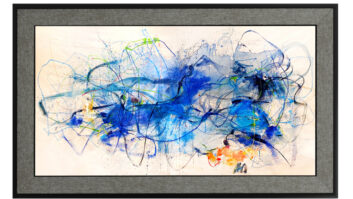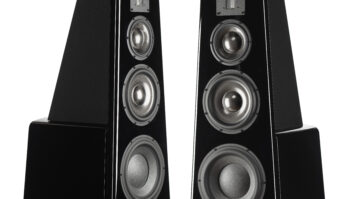Monster Cable has developed a turnkey merchandising and sales-training program designed to reverse the fortunes of the audio-component business and boost the declining attachment rate of home-theater-in-a-box (HTiB) systems to flat-screen TVs.
“If salespeople don’t present what you can do with audio, what do you expect?” founder and “head monster” Noel Lee told TWICE. “We want to create a way to properly show the sales floor how to present today’s audio and video technologies to consumers.”
Called the Monster Reference Home Theater Music Experience (MRHTME), the program will help the industry sell more components and thus provide more opportunity for dealers to sell the cables that connect them and the power-conditioning products that help them sound better, Lee said. The program could also help reverse softness that has begun to emerge in the HTiB market, he added. “If you take the customer through the experience, you might be able to sell Monster Cable products, but for sure you will get more A/V component customers and HTiB customers.”
The program, which will be launched at CES, is an extension of the company’s M4 program, a merchandising and sales-training program designed to help dealers sell more Monster Cable cables and power-conditioning products. Only M4 dealers can participate in the new program.
When M4 was launched about nine years ago, Lee said, “there was no formal training process or merchandising programs to boost accessory sales.” MRHTME is the “next generation” of M4. Audio merchandising and sales are in the same straits today as accessory merchandising was nine years ago, he said. “Everyone has touched in some way on how to generate audio business, but it’s not working for them,” he contended.
“To increase audio separates sales, sell component home theater, and make it palatable to more people, you need a systematized way of doing it and a sales floor trained to deliver the message,” Lee said.
The new program, launched in time for the company’s 25th anniversary, asks dealers to set aside an “area for a true experience” with at least one home theater vignette. The vignette would incorporate the dealer’s choice of audio components, their choice of HTiBs should they want to compare component-audio and HTiB performance, and Monster Cable cables and power conditioners. It would also be “logical,” Lee said, to include Monster’s M*Design speakers, Monster Power amplifiers and Component Center A/V furniture in the presentation, but their inclusion isn’t a requirement, he said.
It would make sense to use Monster’s furniture, he said, because it completely hides components when not in use, eliminating the objections of consumers who might otherwise be convinced of the need for audio components.
Monster’s M*Design speakers will also avoid design objections because they are slim and elegant, the company said. The amps will convince customers of the need for power through large power meters used as selling tools. “They’ll show customers that you need 300 to 400 watts to reproduce the cannon shots of the 1812 Overture,” Lee said. The amps, he noted, will also make it easier to sell high-power receivers.
Monster’s components and furniture will be demonstrated at CES in final prototype form and will ship in February, when the merchandising and training program begins its rollout. The M*Design speaker line consists of five SKUs that can be mixed and matched to create 20 different systems. The amps consist of a three-channel model and a two-channel model that sell for a combined $5,500.
The company will also show a separates series of THX-Select-certified speakers under the Monster THX name.
As part of the program’s training component, Monster will send about 15 trainers into the field to conduct live three-hour workshops. “It’s hard to teach passion through the Web or DVD [training tools],” Lee said. “I don’t see any other way of doing it.” Salespeople will also be certified.
Dealers will get full documentation to set up the program, he continued. “Everything’s covered,” Lee said, including merchandising tips, setting up and calibrating systems, talking to the customer, creating excitement and training new people. Dealers also get music and video software to demonstrate and sell.
“The lack of training is the biggest audio industry drawback,” Lee said. “Ten years ago retailers were investing heavily in salesperson training for audio, but today … it’s not done as much because of the high cost and the need to pull salespeople off the floor.”













